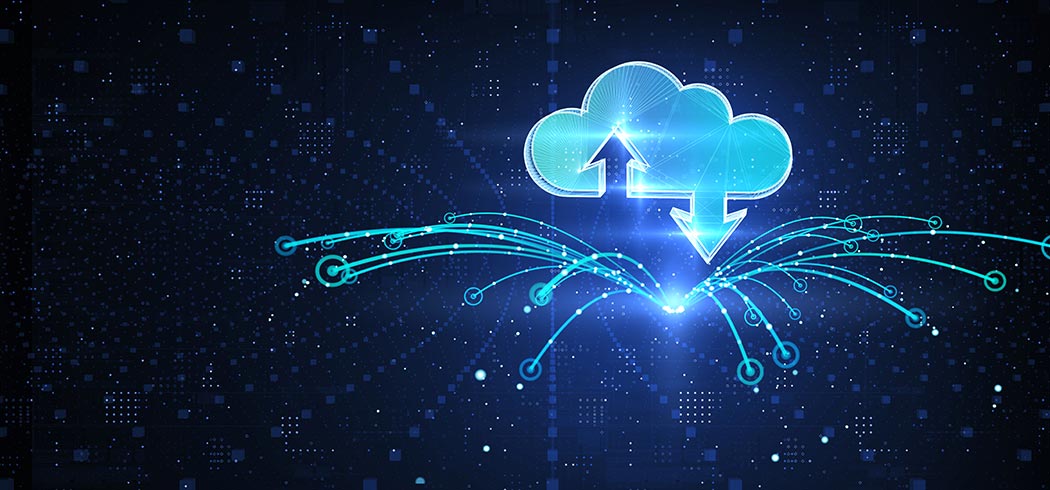
How does cloud computing work?
In the cloud, within a database, there are computers and applications that users can interact with through the internet. When someone connects to a cloud service, they send commands to these computers and apps, which then return the information or process requested.
A common example of cloud computing architecture is an email service, such as Gmail. When you type out an email, the text you enter isn’t stored on your computer’s hard drive but in the cloud—inside one of Google’s databases. Similarly, if you copy an image from a website and insert it into the email, you don’t have a copy of the image stored in your computer’s hard drive. It’s kept in one of Google’s databases—in the cloud.
What are the benefits of cloud computing?
Cloud computing conserves space and processing power on user devices while allowing for instantaneous access to computational resources. As long as you have an internet connection, cloud computing gives you access to software, processes, and storage that would otherwise be out of reach. For businesses, cloud computing allows them to expand their suite of customer solutions and operational capabilities without having to invest in new on-premise hardware or software.
What are the types of cloud?
For people wondering “what is cloud server” and “what is cloud infrastructure,” an examination of the different types of cloud makes the differences between the two clear. Both infrastructure and servers play key roles in cloud computing, but while servers provide information and processes to computers, cloud infrastructure encapsulates servers and everything else on which cloud technology is built. These are the different types of cloud computing:
What does cloud computing mean when it comes to public cloud? A public cloud refers to hardware, network devices, and storage that are shared by more than one individual or organization. Gmail, Dropbox, Google Drive, Microsoft Azure, and Alibaba Cloud are all examples of public cloud solutions. When you log in to any of these services, you are sharing computational resources with many other people at the same time.
Public cloud environments raise a key element of how a cloud server works. A server in the cloud receives and sends data to individuals who connect to it using an internet link. With a public cloud, one cloud server can communicate with many users at once.
A multi-cloud architecture is one in which an organization uses multiple vendors to provide the same kind of cloud service. For example, if a company uses both Google Drive and Dropbox to store and share documents, they have a multi-cloud setup.
Private cloud refers to cloud space dedicated to a single individual or organization. No one else uses the resources in a private cloud setup except those who subscribe to them.
What is cloud solution when it comes to hybrid cloud? With a hybrid cloud environment, an organization makes use of on-premise computing as well as private or public cloud services. For example, if a company stores sensitive client financial information on-premise but uses PayPal, a cloud-based payment solution, to process payments, they are using a hybrid cloud architecture.
What is cloud networking?
Often, you may have to connect two cloud solutions, public, private, or both, and cloud networking dictates how their connection is established and managed.
What are the 4 types of cloud computing?
IaaS
IaaS stands for infrastructure-as-a-service and refers to computing infrastructure that’s provided in the cloud, such as hard drives, backup storage, networking services, and virtualization. An organization using IaaS can connect thin clients or other small computers with minimal on-premise hardware and software resources.
SaaS
SaaS, or software-as-a-service, refers to software that’s run, managed, and secured in the cloud. Instead of the software running on the computer or device in front of you, it’s run on resources in a remote database.
PaaS
PaaS, or platform-as-a-service, provides users with hardware and software in the cloud, comprising an entire platform users can access. PaaS is commonly used by developers for creating and managing applications.
CaaS
CaaS, or containers-as-a-service, helps users deploy and manage applications using a container-based abstraction model. Containers make it easier to develop and deploy cloud-based apps while maximizing scalability and flexibility.
Cloud computing is an optimal solution for anyone that wants a flexible, agile infrastructure for their business. To learn more about how cloud computing can help transform and enhance your organization, reach out to Unisys today.
Cloud solutions for the world’s most demanding organizations
Unisys cloud solutions adhere to the highest security and compliance standards to mitigate risk at each stage of the cloud adoption lifecycle. We design, deploy, and manage flexible and customized cloud solutions that effectively address our clients’ current needs while establishing a foundation to support long-term growth and change.


